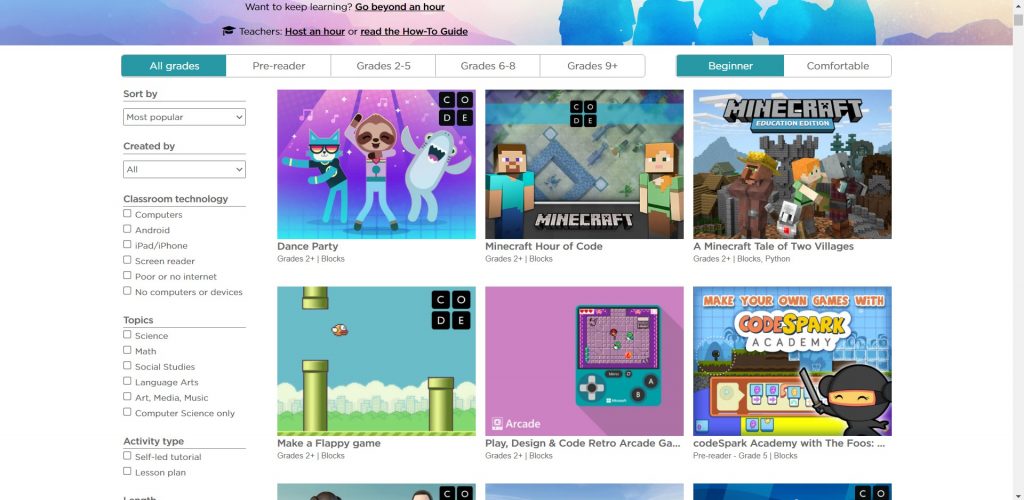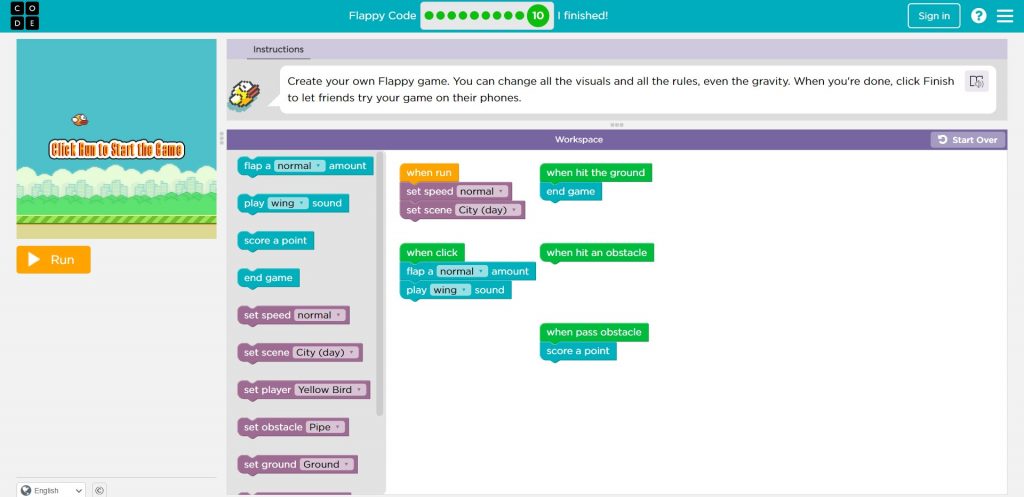In my EDTC300 class, we talked about the importance of coding, also known as programming. As soon as I heard “coding,” all I could think of were programming languages such as Python, C, etc. I never realized the importance of teaching/learning coding from a young age, but reading an article about why kids should learn how to code changed my mind. Programming languages may be difficult to grasp, but they behave just like children. This is an example my computer science professor used all the time— if you tell a kid to get into the car, the kid will go into the trunk because you never specified which part of the car to get into and the trunk is still a part of the car. Coding works similarly, it requires critical thinking and problem solving skills. Learning about coding can boost these beneficial skills from a young age with the help of websites such as Hour of Code and Scratch. Both websites have tutorials and interactive exercises on the basics of coding for everyone (mostly children) to use. In this blog, I’ll be trying and talking about Hour of Code.
I liked that the lessons are based off of popular games, such as Minecraft to gain student’s attention. Each lesson had recommended age, such as grades 2 +.


I decided to go with the Flappy Bird lesson since I’m already familiar with the game. The first thing I noticed is that the structure of the blocks are quiet similar to coding. I didn’t expect it to be very advanced or similar to actual programming but I could see why teachers love using Hour of Code for practice. I liked that there were many options to choose from, which made the lesson more interesting.
In the end, I was able to create my own version of Flappy Bird, which can be very entertaining and fun for the students.

Overall, I’m very satisfied with the content of Hour of Code— the blocks are related to actual programming, and the animation makes the lessons more interesting. The only downside is that some of the activities are wayyyyy too difficult for the age recommendations. Even I couldn’t do some of the exercises that are supposed to be grade 2+ (no shame though, they’re actually really hard). But I think that it’s a great website to introduce programming to students in a fun way to promote critical thinking and problem solving.
I really like that coding analogy you shared from your professor; I think it’s a great relatable way of looking at it! And I totally agree with you– the age ranges on Hour of Code are not always super accurate. The activity that I did was I think Gr 5 + but it wasn’t too intensive, so I think younger ages could do it too. But I also witnessed it the other way around, as you say, with the content being much harder in some cases. I think that my general take-away from these realizations was just that as teachers we definitely need to test the content before giving assignments to students!
Thanks for sharing the analogy from your professor, it’s a great way to explain how specific coding is. I also appreciated your honesty at the end with the games. Being honest that you struggled with some of the games shows that you will be a great leader in the classroom and students will feel like they can also mistakes and learn from it.
Hello Mingyeong, I like your professor idea which was really approachable! To me also coding was weird as a way of learning! I could not imagine I can use them in the classrooms! I do agree with you that some activities in Hour of code ,I think some of them are not that much easy for younger children to be honest!